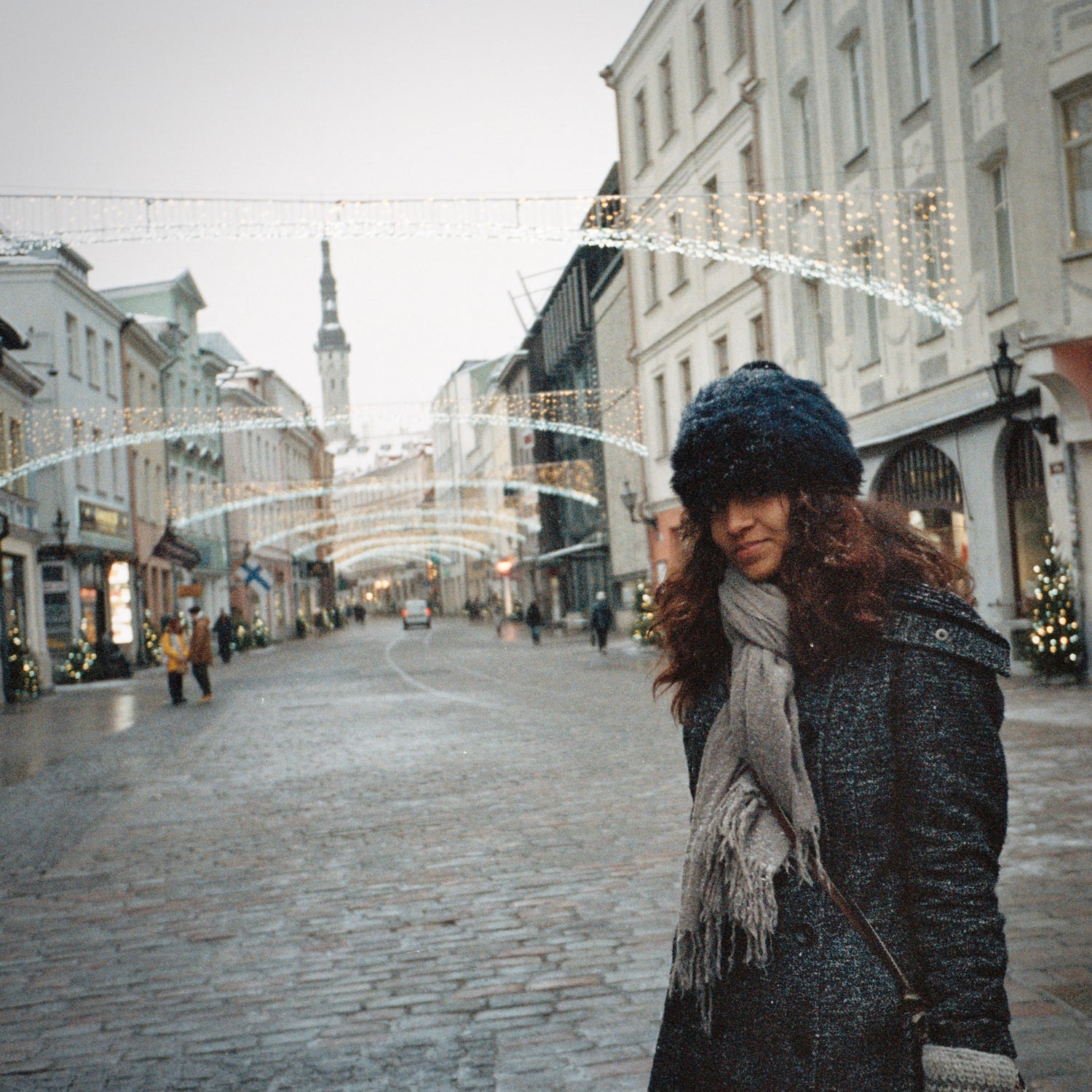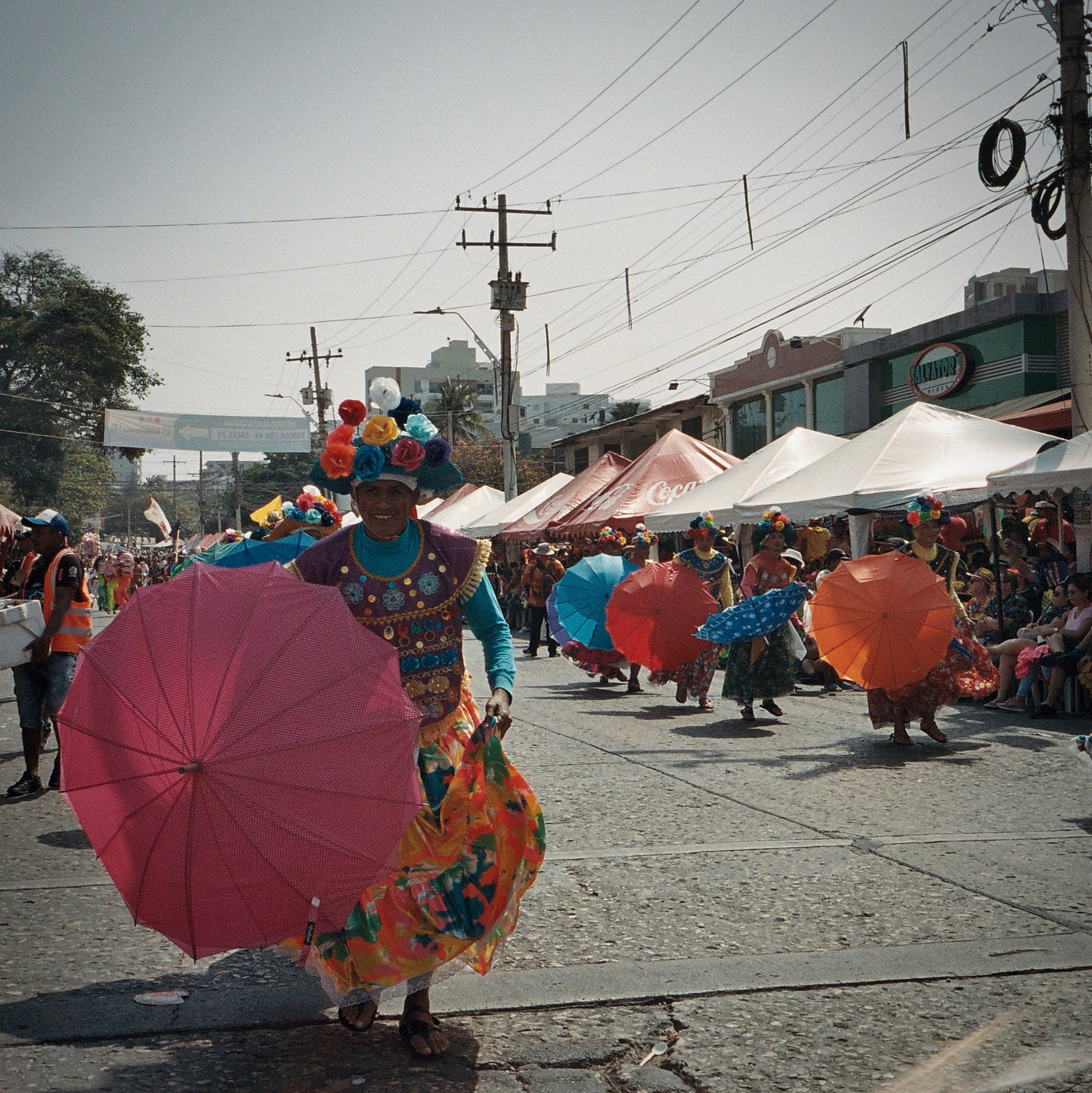-

Colombialannast Võrumaa ehtekunstik: minu sünniriik ei ole ainult kuritegelik koht, tahan eestlaste arvamusi muuta
Kariibi mere ääres võõrkeelte õpetajaks õppinud 22aastane Ivana Ochoa Lizarazo kolis Eestisse 2020. aastal. Mullu oktoobris registreeris ta end Võrumaal hoopis ettevõtjaks ja tegeleb Colombia ning Eesti traditsioonilise käsitöö lõimimisega.
-

Kolumbialanna naudib elu Võrumaa metsade vahel
Ivana Ochoa Lizarazo (23) on Kolumbia naine, kes ei teadnud 2019. aastani Eestist midagi. Nüüd on tema kodu Võrumaal väikses külakeses, ta on abielus eestlasega ja neil on kahekuune pisitütar.
-

ARMASTUSE KUTSE! Kolumbialanna kolis Eesti tallu: esimest korda suitsusauna minnes ma minestasin
Võrust 15 minuti kaugusel väikeses talumajas elab Ivana Ochoa, kes kolis siia armastuse nimel. „Võrreldes Kolumbiaga meeldib mulle Eestis väga. Siin on palju turvalisem,“ võrdleb ta endist ja praegust kodumaad. Tõsi, esimest korda koduses suitsusaunas käimine lõppes üsna kehvasti. „Tundsin, et vajan õhku ja siis lihtsalt…“ meenutab ta.
-

Maahommik
õrumaal Noodaskülas asub talukoht, mis näeb välja nagu vana talukoht ikka. Sinna sattudes ei aimagi, et sealt majast leiame eest ka tükikese Kolumbiat. Lõuna-Ameerikast pärit Ivana teeb seal ehteid mis inspireeritud Kolumbia põlisrahvaste tarkustest ja mustritest. Saatejuht Kerli Dello, toimetajad Heleri All ja Mari Fleming, režissöör Maarika Lauri, operaator Tanel Velli-Vällik, produtsent Kadi Katarina Priske.

My Story
I am a Colombian artist with Afro-Caribbean and Barí (South American indigenous) roots. I was born on the banks of the Magdalena and raised by the Cauca river. I went to university in Barranquilla, a port city known for its carnival and its extraordinary multicultural history. I came to Estonia because of love
My work is embedded in timeless stories of traditional culture that I want to share with you. I want to bring beauty and joy to people who are curious and looking for simplicity, who don't want to over-consume and would rather support original handicrafts than fast-fashion factories
Showcase the rich cultural heritage of my country. Many know Pablo Escobar and have seen 'Narcos', a few Gabriel Garcia Marquez's '100 Years of Solitude' and its magical realism, but even the latter is just the tip of the iceberg - Colombia is very diverse, ethnically, culturally and in terms of natural biodiversity. That's why I've included links on this webpage, which will give you an insight into my country, its people, culture, art and music.

Wayuu
The Wayuu live on the Caribbean coast of the desolate La Guajira peninsula. Most of the time, life is very hard, with little to live on - except for the sun and the warm sea breeze that swirls sand and dust clouds between the cactuses. With very little rain (it can go for years without rain) and only a few water-logged rivers as natural water sources, many communities do not have enough water. The lack of water and materials also hinders handicrafts, which are one of the main sources of income today
In the cosmological worldview of the Wayuu, all that exists is interconnected in an infinite network. Objects are knitted, interwoven with stories - and each pattern has a meaning. The significance can be mystical or extremely trivial - for example, the 'gait of a dizzy donkey' or simply the interplay of colours inspired by Guajira's natural world.

Barí
Part of my roots are the Barí (also Motilon-barí) - an indigenous people from the Catatumbo rainforests of present-day Colombia and Venezuela. They once ranged from the Perijá Mountains to the vast and magical Lake Maracaibo. Although the Spaniards failed to conquer them, it was diseases and later industrialisation, mainly mineral extraction, that quickly destroyed a significant part of their people and culture. Many have mixed with other peoples and settled elsewhere. In their own language, Barí means 'Son of the Forest' and Catatumbo 'Land of Storm and Thunder', because on most nights the sky above their land is lit up by an endless dance of lightning. This is particularly visible from Lake Maracaibo.

Afro-Caribbean
The African diaspora in Colombia is the third largest after Brazil and the United States, with more than 12 million Afro-descendants, making up just over 26% of the total Colombian population. The first colonial-free city in South America was Palenque in Colombia, founded by slaves fleeing the conquistadors and the first “latino” revolutionary was the Afro-Colombian king Benkos Biojó. Nowadays, Palenque can be a touch too " touristy", although if you're looking you can find some spectacular experiences there too. It's worth visiting other towns in the same area, such as Gamero, where a large proportion of the few thousand inhabitants are musicians (the most famous of whom, the Grammy award-winning Magín Díaz, is sadly deceased) and happy to show off their skills.

It is impossible to overestimate the influence of Africa on Colombian culture. Interestingly, thanks to the omnipotent grip of globalisation, its resonance even reaches to Europe - apparently many people have heard the reggaeton. This style has its roots in the cumbia - the rhythm born of the water and land, the Magdalena River and shores of the Caribbean, the co-creation of Africans and Indigenous.
Cumbia is one of the many cross-musical cultural phenomenas that is expressed at the annual carnival of Barranquilla, the biggest party this side of the equator. Worth to mention that the European contribution is also apparent: look at the costumes!

In fact, the party is more of a by-product of the carnival. For the more than a thousand communities that take part in it, the carnival is first and foremost an opportunity to show off their customs, dances, music and costumes. There are two parades: one for commercial purposes, charged to the public seated in the grandstands ... and the other open to all, tens of kilometres long, starting in the morning and ending in the evening.
Youngsters, however, prefer the faster rhythms - like champeta, which sounds like the echo of dancing shadows of Caribbean's smooth ocean breeze, or powerful hybrids of electronica and cumbia, like, Bomba Estéreo and Lido Pimienta who are mixing beautifully robust traditions with modern musical language.




